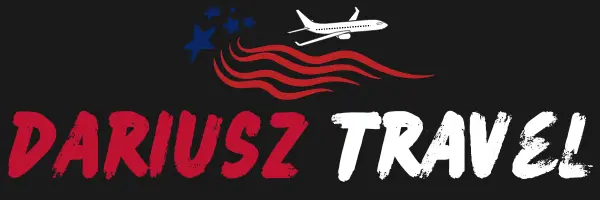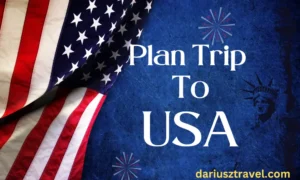Best Time To Travel To Hawaii In 2024 [Weather Guide]

Choosing the best time to travel to Hawaii is a concern many travelers face. The varied climate, fluctuating costs, and array of activities make this decision complex and potentially stressful. In 2024, this choice becomes even more significant with special events and considerations that can further influence your travel experience.
Understanding the urgency and importance of finding the correct answers, this article aims to unravel the complexities and provide clear insights and guidance. From seasonal weather patterns to exclusive 2024 opportunities, we have comprehensively covered all the factors that will help you pinpoint the best time to go to Hawaii. Rest assured, by the end of this guide, you will have all the information needed to plan your dream Hawaiian vacation.
Weather and Climate Overview
Hawaii is a land of diverse climates, where you can experience several microclimates within the same day. The islands are graced with everything from arid deserts to lush rainforests, and each region carries its weather characteristics. The windward sides are often more relaxed and wetter, while the leeward sides bask in warmth and sunshine. Travel from the snowy peaks of Mauna Kea to the sun-kissed beaches of Waikiki, and you’ll marvel at the climatic contrasts that await.

Average Temperatures
Hawaii maintains a relatively stable temperature year-round, with averages ranging from 78°F (25.6°C) in January to 88°F (31.1°C) in August.
Unlike many other destinations, Hawaii doesn’t experience the traditional four seasons. Instead, it has two main seasons:
Aloha Season (Summer)
Running from May to October, the Aloha season brings warmer temperatures, averaging around 75-88°F (24-31°C). The days are longer, sunnier, and less rainy, especially on the leeward sides of the islands.
Ho’oilo Season (Winter)
From November to April, the Ho’oilo season is more remarkable, with temperatures ranging from 68-80°F (20-27°C). These months can be rainier, especially on the windward sides, and the islands may witness occasional storms.
Relation to the Best Time to Travel
Understanding Hawaii’s weather and climate is critical to determining the best time to travel to Hawaii. If you dream of basking on sun-soaked beaches, the Aloha season might be your best bet. Those seeking lush landscapes and more relaxed hiking experiences may prefer the Ho’oilo season. For surfers, the winter months bring large swells to the north shores, while the summer offers gentler waves on the south beaches. Whale watchers should consider visiting between December and March when the majestic humpback whales grace the Hawaiian waters.
Weather In Hawaii In April
April falls within the transitional period between Hawaii’s two main seasons, offering a delightful blend of the Ho’oilo and Aloha seasons. Temperatures typically range from 70-80°F (21-27°C), making it comfortably warm without being overly hot. Rainfall is moderate, allowing for lush landscapes without too many wet days. Whether it’s beach lounging or trail exploring, April’s balanced weather offers something for everyone.
Weather In Hawaii In August
In the heart of the Aloha season, August in Hawaii is characterized by warm and sunny weather. Temperatures can reach 88°F (31°C) but are tempered by the cool ocean breezes. Rain is relatively rare, especially on the leeward sides of the islands. August is the best time to travel to Hawaii, snorkeling, and enjoying the vibrant Hawaiian summer.
Weather In Hawaii In March
March signifies the tail end of the Ho’oilo season, and the weather can be a mix of sunny spells and occasional rain showers. Expect temperatures ranging from 68-78°F (20-26°C), making it an excellent option for those seeking relief from the summer heat. The rainier conditions nourish the landscapes, making March a perfect time for photographers and nature lovers to capture Hawaii’s lush beauty.

Rainfall Variations
The wettest months in Hawaii are typically November through March. Kauai, known as the “Garden Island,” receives the most rain, with an annual average of 50 inches (127 cm).
Weather In Hawaii In January
January falls within Hawaii’s more excellent Ho’oilo season, with temperatures ranging from 65-75°F (18-24°C). It’s a month known for increased rainfall, particularly on the windward coasts, and the occasional winter storm. Despite this, there are plenty of sunny days to enjoy. January is a prime time for whale watching and offers an escape from the typical winter chill found in many other locations.
Weather In Hawaii In October
October ushers in the transitional phase as the Aloha season starts giving way to the Ho’oilo season. The weather is mild, typically between 73-85°F (23-29°C). Rainfall begins to increase but generally remains moderate. October is the best time to travel to Hawaii that offers a beautiful blend of summer and winter conditions, making it a versatile time for various activities, from swimming to hiking.
Best Time To Travel To Hawaii (Overall)
Analysis of Each Season (Winter, Spring, Summer, Fall) and Its Pros/Cons for Travelers
Winter (December – February)
Pros
Cooler temperatures, whale-watching season, lush landscapes.
Cons
More rainfall, occasional storms, and higher prices due to holiday travel.
Spring (March-May)
Pros
Moderate temperatures, blooming flora, fewer tourists, transitional weather.
Cons
Unpredictable rain, possible overlap with spring break crowds.
Summer (June – August)
Pros
Warm and sunny weather is ideal for beach activities and numerous festivals.
Cons
Hot at times, crowded tourist spots, higher accommodation prices.
Fall (September – November)
Pros
Pleasant temperatures, fewer crowds, transitional weather.
Cons
It is increasing rainfall (especially in November), less predictable weather.

Tourism Peaks
Most tourists tend to arrive in Hawaii during the winter months. In 2019, over 880,000 visitors came in December alone, while September, a shoulder month, saw around 670,000 visitors.
Insight into Specific Months and the Events or Festivals That Occur
January
Whale-watching tours, New Year’s celebrations.
February
World Whale Day, Maui Whale Festival.
March
Prince Kuhio Day celebrations, Honolulu Festival.
April
Merrie Monarch Festival, Lei Day.
June
King Kamehameha Day, Pan-Pacific Festival.
July
Independence Day celebrations, Ukulele Festival.
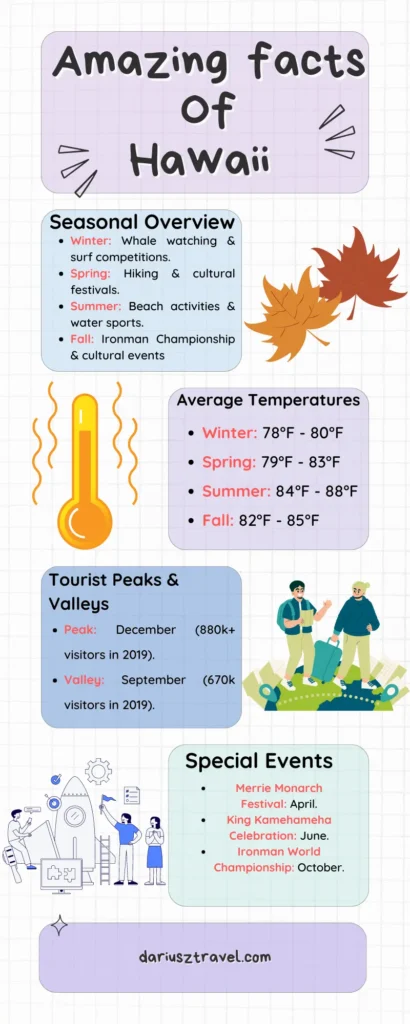
August
Hawaii Statehood Day, Hawaiian Slack Key Guitar Festival.
September
Aloha Festivals, Queen Lili’uokalani Long Distance Canoe Races.
October
Hawaii Food and Wine Festival, Ironman World Championship.
November
Kona Coffee Cultural Festival, Vans Triple Crown of Surfing.
December
Honolulu Marathon, Hawaii Bowl, Christmas and New Year’s Eve celebrations.
| Season | Weather | Activities & Events | Pros | Cons |
| Winter (Dec-Feb) | Cooler, 78°F-80°F, rainy | Whale watching, surf competitions | Whale migration, festive events | Crowded, higher prices |
| Spring (Mar-May) | Mild, 79°F-83°F, less rain | Hiking, Merrie Monarch Festival | Fewer crowds, pleasant weather | Transition between wet and dry |
| Summer (Jun-Aug) | Warm, 84°F-88°F, dry | Beach activities, King Kamehameha Celebration | Ideal beach weather, lots of sun | Hot, peak tourist season |
| Fall (Sep-Nov) | Warm, 82°F-85°F, variable | Ironman Championship, cultural events | Shoulder season, possible deals | Unpredictable weather |
Special Mention of What to Expect in 2024
In 2024, Hawaii is expected to host a series of special events and festivals to add even more allure to the islands. Visitors can look forward to unique cultural celebrations, commemorative occasions, and exclusive entertainment options. Climate patterns may experience slight variations due to global weather changes, so staying updated on local forecasts is recommended. Additionally, 2024 may see new travel incentives and packages designed to enhance tourism, providing travelers with exciting opportunities to explore Hawaii in new and thrilling ways.
The best time to travel to Hawaii depends on individual preferences, activities, and expectations. By considering the seasons, specific months, events, festivals, and unique offerings of 2024, travelers can tailor their Hawaiian vacation to align perfectly with their desires. Whether it’s catching a grand celebration or basking in the tranquility of the off-season, Hawaii’s multifaceted charm ensures a magical experience whenever you choose to visit.
Best Time To Go To Hawaii for Different Activities
Hawaii is a world-renowned destination for surfing, and the best time to travel to Hawaii depends on your skill level and the type of experience you seek.
For Big Waves
If you’re an experienced surfer looking for big waves, the winter months (November to February) are prime on the islands’ north shores, especially on Oahu’s famed North Shore.
For Beginners
Summer months (May to September) provide smaller and gentler waves on the south shores, making it ideal for beginners and those looking to enjoy other water sports like paddleboarding and snorkeling.
Hiking and Nature Exploration

Hawaii’s diverse landscapes offer endless opportunities for hiking and nature exploration.
For Lush Landscapes
The end of winter and the start of spring (February to April) are great for enjoying the lush landscapes rejuvenated by winter rains.
For Cooler Hikes
Consider the winter months (December to February) for a more temperate hiking experience.
For Dry Conditions
Summer (June to August) offers dry and stable trails but can be hot.
Cultural Events and Festivals
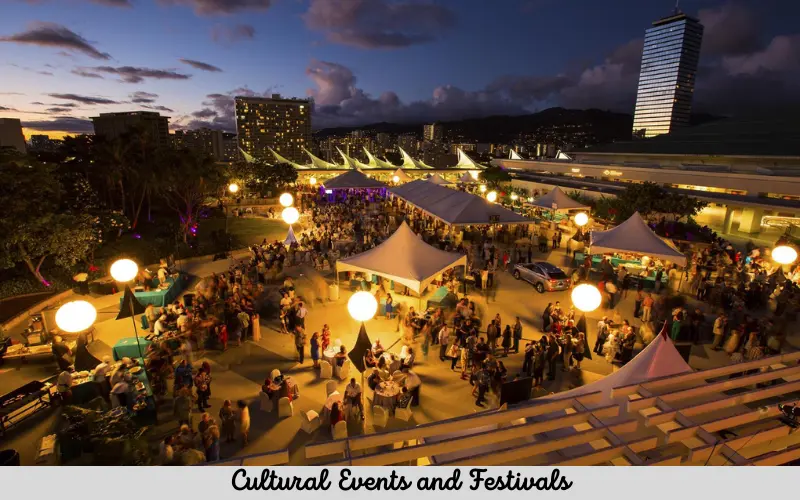
Hawaii’s rich cultural heritage is showcased through various events and festivals.
For Traditional Culture
April’s Merrie Monarch Festival is a must-see for those interested in traditional Hawaiian culture and hula.
For Culinary Delights

Food enthusiasts should plan around the Hawaii Food and Wine Festival in October.
For Musical Enjoyment
The Ukulele Festival in July offers a unique musical experience.

Surfing Competitions
The world-famous North Shore of Oahu hosts prestigious surfing competitions between November and December. Waves can reach heights of 20-50 feet.
Beach and Leisure Time
For those looking to unwind on Hawaii’s stunning beaches, the weather and crowd levels are vital considerations.
For Sunbathing and Swimming
The summer months (June to August) are perfect for beachgoers seeking warm, sunny days.
For Less Crowded Beaches
Consider visiting during the shoulder seasons (April to May and September to October) to enjoy the beaches with fewer crowds.
Traveling to Hawaii in 2024: What to Expect
In 2024, travelers to Hawaii can expect a blend of traditional charm with modern conveniences. Some anticipated trends include:
Sustainable Tourism
Emphasis on eco-friendly practices, local sourcing, and responsible tourism will likely continue to grow.
Technology Integration

Expect enhancements in technology to streamline travel experiences, from bookings to guided tours.
Diverse Accommodations
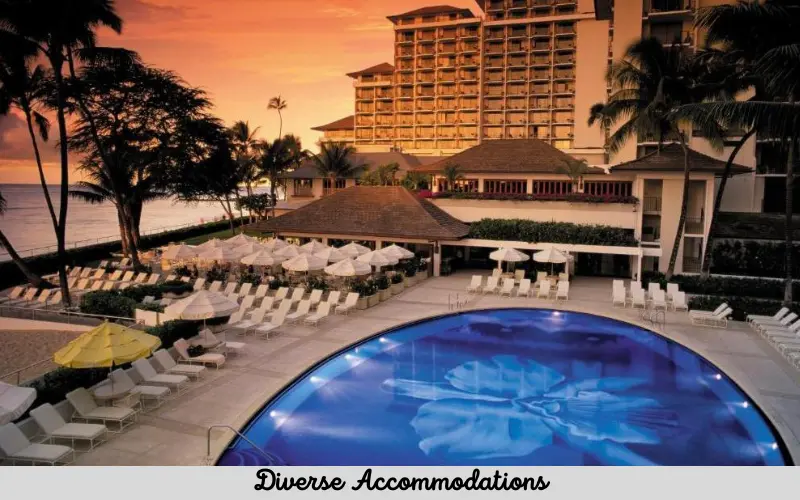
A range of lodging options catering to different budgets and preferences will be more widely available.
Climate Variations
Awareness of local weather patterns and possible changes will be vital, especially with ongoing global climate shifts.
Special Events, Anniversaries, or Festivals in 2024
2024 promises to bring some exciting celebrations and special occasions to Hawaii, including:
Anniversary Celebrations
Keep an eye out for commemorative events marking significant anniversaries in Hawaiian history and culture.
Exclusive Festivals

Expect new and exclusive festivals highlighting various aspects of Hawaiian life, from culinary delights to artistic expressions.
Global Events
Hawaii may host international conferences, sports events, and gatherings that can add an extra layer of excitement to a 2024 visit.
Tips for Planning Ahead
For those considering a trip to Hawaii in 2024, planning will ensure a smooth and fulfilling experience:
Consider Sustainability
Look for eco-friendly travel options and support local businesses to contribute positively to Hawaii’s community and environment.
Stay Informed
Keep an eye on travel regulations, weather forecasts, and local news to prepare for unexpected developments.
Utilize Technology
Leverage apps and online resources for easy navigation and bookings and to stay connected with local happenings.
Cost Consideration and Savings
Hawaii’s allure as a travel destination leads to price fluctuations during different times of the year. Understanding these can help you choose the best time for your budget.
Peak Season (Winter and Summer)
December through February and June through August are peak seasons, and prices for accommodations and activities can be higher.
Shoulder Season (Spring and Early Fall)
April to May and September to October offer moderate prices and pleasant weather.
Off-Peak Season (Late Fall)
Late October to early December may present the lowest prices, especially for accommodations and flights.
How to Budget for a Hawaiian Vacation in 2024
Planning a budget for a Hawaiian vacation requires consideration of several factors:
Accommodation
Decide on the type of lodging and research prices for the desired travel period.
Transportation
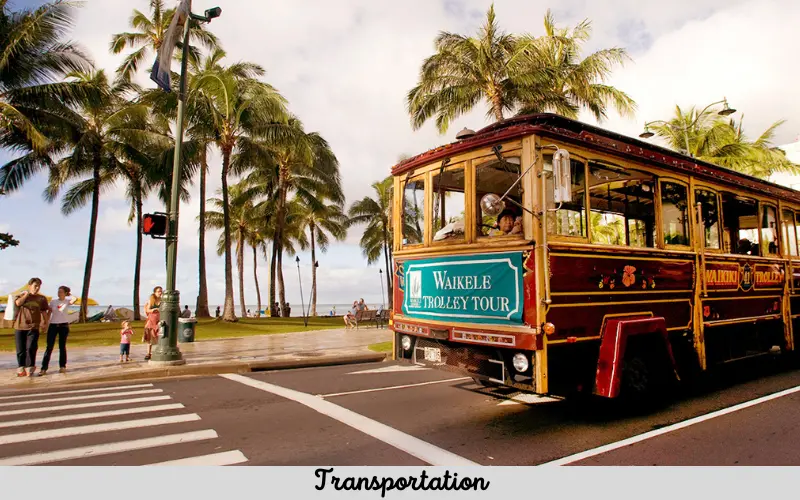
Include flight costs, inter-island travel, and local transportation.

Airfare Fluctuations
Historical data shows that flight prices to Hawaii can vary by up to 50% throughout the year, with the most expensive tickets found around Christmas and New Year’s.
Activities and Excursions
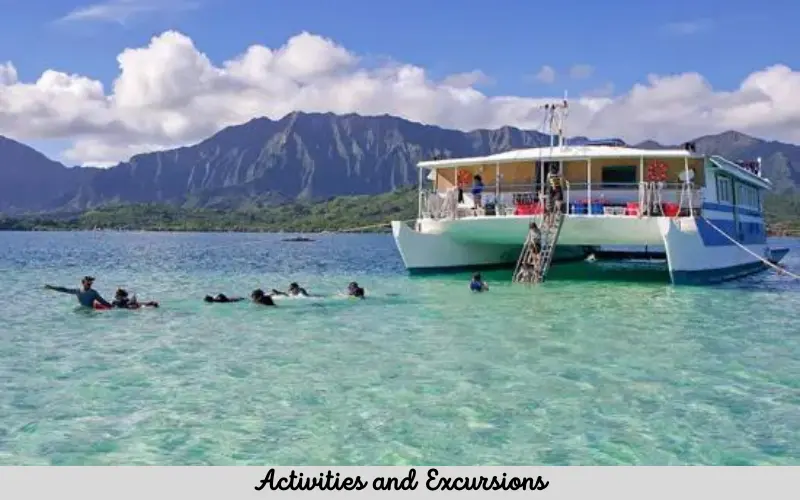
Budget for planned activities, tours, and unexpected adventures.
Meals and Dining
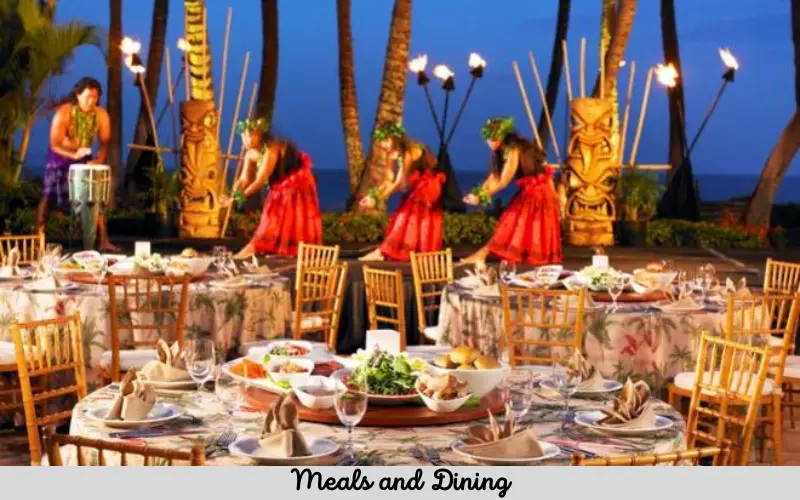
Consider dining preferences, from cooking at home to enjoying local restaurants.
Insurance and Unexpected Cost
Include travel insurance and allocate some funds for unexpected expenses.
Monitor Exchange Rates
For international travelers, keeping an eye on currency exchange rates may impact the budget.
COVID-19 and Other Considerations for 2024
As of the writing of this article about the best time to travel to Hawaii, travel restrictions and requirements can change rapidly due to the evolving nature of the COVID-19 situation. Here’s what travelers to Hawaii might expect in 2024:
Vaccination and Testing Requirements
Travelers may need to provide proof of vaccination or negative COVID-19 test results. Always consult with the official Hawaiian government website or airline for the most accurate and up-to-date information.
Quarantine Regulations
Depending on the global COVID-19 situation, mandatory quarantine rules may be in effect for unvaccinated or partially vaccinated travelers.
Local Regulations
Be aware of local restrictions, such as mask mandates or limitations on gatherings, which may vary across different islands.
Health and Safety Tips
Travelers to Hawaii in 2024 should prioritize health and safety by following these guidelines:
Follow Official Guidelines
Adhere to the recommendations and rules set by the Hawaiian government and local authorities.
Pack Essential Supplies
Bring masks, hand sanitizers, and any other personal protective equipment that might be required.
Stay Informed
Regularly check for updates on travel restrictions and health advisories, especially as your travel date approaches.
Purchase Travel Insurance
Consider travel insurance that covers COVID-19-related cancellations or medical expenses.

Environmental Initiatives
Hawaii is leading in renewable energy, aiming for 100% clean energy by 2045. Travelers in 2024 might notice increased sustainable practices and opportunities to engage in eco-friendly activities.
Environmental Considerations
Hawaii’s fragile ecosystem demands respect and care from visitors. Here’s what to consider:
Respect Local Wildlife
Follow guidelines for interacting with marine life, birds, and other native species.
Minimize Waste
Practice responsible consumption, including using reusable items and minimizing single-use plastics.
Choose Eco-Friendly Options
Opt for accommodations, activities, and transportation providers prioritizing sustainability and environmental stewardship.
Observe Trail Regulations
Stick to designated hiking paths to protect native flora and fauna, and follow Leave No Trace principles
Conclusion
Traveling to Hawaii is a dream that resonates with many, and this guide has provided insights into making that dream come true in 2024. From understanding the diverse weather patterns and choosing the right season to consider unique activities, budgeting wisely, and navigating COVID-19 considerations, we’ve covered it all. Your Hawaiian adventure is not merely a destination but a journey enriched by choices. Whether you’re riding the waves, exploring trails, immersing in cultural festivals, or simply basking in beach leisure, the islands offer something for everyone. 2024 could be the best time to travel to Hawaii, with this guide, you’re equipped to make the most of it.
